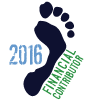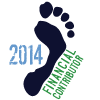You are using an out of date browser. It may not display this or other websites correctly.
You should upgrade or use an alternative browser.
You should upgrade or use an alternative browser.
Stress Fracture Of the Second Metatarsal – Self Help Tips to Treatment and Prevention from The Baref
- Thread starter Barefoot TJ
- Start date
Just thought I'd relate my experience to anyone reading this who thinks they have a stress fracture or has been diagnosed with a stress fracture.
I got top-of-the-foot-pain less than a month after I got back into barefoot running, and after another 3-4 months of on-and-off pain went to see a sports doc. He showed me a spot on the x-ray where he said I had a stress fracture. I saw nothing. Nine months passed and I still had top-of-the-foot-pain, despite resting and icing whenever it would flare up.
OK, so more than a year of tofp and my body still hadn't adapted to the stress of running bare? Didn't make sense. So I re-read Jimmy Hart's article on top-of-the-foot-pain, massaged my shin muscles as he recommended, and abracadabra, I felt the tofp magically release instantaneously. I've been free of tofp ever since. What I had was 'referred pain' in my feet's tendons, caused by tight and knotted shin muscles. I would think a sports doc would have to be pretty incompetent not to have considered this possibility. My doc was in his late fifties/early sixties, so inexperience wasn't the problem.
In sum, while I'm not saying a diagnosis of stress fractures or stress reactions for tofp is always going to be wrong, I do have to wonder how many times tofp is misdiagnosed as a stress reaction of some sort, when really it's just sore tendons caused by tight muscles and 'referred pain.'
If you have tofp, first try simply massaging your shin muscles and calves with a rolling pin or a massage stick/wheel/knobble, and see it you don't feel a flush in your feet as the tension is released. If that doesn't help, then consider seeing a doc.
I got top-of-the-foot-pain less than a month after I got back into barefoot running, and after another 3-4 months of on-and-off pain went to see a sports doc. He showed me a spot on the x-ray where he said I had a stress fracture. I saw nothing. Nine months passed and I still had top-of-the-foot-pain, despite resting and icing whenever it would flare up.
OK, so more than a year of tofp and my body still hadn't adapted to the stress of running bare? Didn't make sense. So I re-read Jimmy Hart's article on top-of-the-foot-pain, massaged my shin muscles as he recommended, and abracadabra, I felt the tofp magically release instantaneously. I've been free of tofp ever since. What I had was 'referred pain' in my feet's tendons, caused by tight and knotted shin muscles. I would think a sports doc would have to be pretty incompetent not to have considered this possibility. My doc was in his late fifties/early sixties, so inexperience wasn't the problem.
In sum, while I'm not saying a diagnosis of stress fractures or stress reactions for tofp is always going to be wrong, I do have to wonder how many times tofp is misdiagnosed as a stress reaction of some sort, when really it's just sore tendons caused by tight muscles and 'referred pain.'
If you have tofp, first try simply massaging your shin muscles and calves with a rolling pin or a massage stick/wheel/knobble, and see it you don't feel a flush in your feet as the tension is released. If that doesn't help, then consider seeing a doc.
I think one problem doctors have is that we don't go back and tell them when they are wrong. It's hard enough telling doctors anything, and if we sort out a problem by another route we're not going to take time off to sit in a waiting room just to tell them that. When I look back over the relatively few times I have been to a doctor over the last 20 years, I can't actually think of many occasions when I was given a treatment that actually worked other than antibiotics for acute mastitis! When stuff doesn't work, i don't generally go back but look for other solutions. But I guess if you look at the doctors record, you'd assume the treatment was successful precisely because I didn't go back.
Good point. It would be a hassle to make another appointment just to tell my sports doc he was wrong, but I should send a message telling him what cured me. Still, I am amazed that a veteran sports doc wasn't familiar with the concept of 'referred pain' and didn't consider the possibility of sore tendons/knotted muscls at all. And it's not just him, I see 'stress fractures' and 'stress reactions' discussed quite a bit in stories about transitioning to bare/minimalist running, but almost no mention of tight shin muscles as a cause of tofp. Yet I know of many people here at BRS who have have had exactly this problem, and almost all of us have spent many months ignorant of the real cause, despite having been seen by medical professionals.I think one problem doctors have is that we don't go back and tell them when they are wrong. It's hard enough telling doctors anything, and if we sort out a problem by another route we're not going to take time off to sit in a waiting room just to tell them that. When I look back over the relatively few times I have been to a doctor over the last 20 years, I can't actually think of many occasions when I was given a treatment that actually worked other than antibiotics for acute mastitis! When stuff doesn't work, i don't generally go back but look for other solutions. But I guess if you look at the doctors record, you'd assume the treatment was successful precisely because I didn't go back.
I wonder if there's a sort of osteo-ideological bias at play . . .
Or are bones and x-rays just sexier than muscles and massages?
If docs only get praise for the problems that they've resolved, and no other feedback, then it's natural that they would assume that they've cured everyone with their advice. A quick letter or email would be a great idea.It would be a hassle to make another appointment just to tell my sports doc he was wrong, but I should send a message telling him what cured me.
I'm not sure where or how I first came upon the article/Jimmy's site TJ. In any case, here's the links:Do you have a link to Jimmy's article, Lee? Didn't he post that here before?
http://gobarefooting.wordpress.com/2010/04/21/injury-top-of-the-foot-pain/
http://gobarefooting.wordpress.com/2010/05/01/injury-top-of-the-foot-pain-treatment-and-recovery/
http://gobarefooting.files.wordpress.com/2010/04/foot-muscles.jpg
I agree, patient feedback is crucial, but they also need to keep on top of their journal reading, and entertain multiple hypotheses. My regular doc works at a clinic just a few blocks from my house, but for the sports doc I have to drive halfway across town to a specialty clinic. If it were more convenient, I'd probably schedule an appointment with that guy again. He was a very likeable guy, but didn't seem like the sharpest tool in the shed. Maybe I will anyway, because another sports doc in that same clinic saw me about my MCL, and has said I can go in and get a gait analysis any time I please. Might be fun. Then again, they might tell me I'm doing it all wrong. I don't want to hear that.If docs only get praise for the problems that they've resolved, and no other feedback, then it's natural that they would assume that they've cured everyone with their advice. A quick letter or email would be a great idea.
NickW
Guest
Eh, you don't have to listen to their advice Lee. They deal mostly with shod runners I would imagine, and probably have little understanding to what it takes to run actually barefoot. I did a gait analysis a year and a half or so at a running shoe store. They have everyone run barefoot. The lady couldn't figure out a reply when I told her that her gait analysis was going to be faulty of the normally shod runners because she was having them run barefoot. I told her if you really want to analyze how they run you should do this when they are wearing their normal running shoes because shoes really change a persons gait. I think it irritated her, but then she told me how great of form I had...Then again, they might tell me I'm doing it all wrong. I don't want to hear that.
Those docs might just well be keeping up with their journal reading and practicing the standard of care. That's what they're trained to do, and it's already quite an accomplishment to do this. It takes an exceptional doctor to think outside the box, because that's not part of their training.I agree, patient feedback is crucial, but they also need to keep on top of their journal reading, and entertain multiple hypotheses.
However, this would be problematic, if the entire paradigm was in error. Fot example, recognition of H. pylori changed the standard practice for ulcer treatment.
The shod foot is the norm for current research, treatment, and rehabilitation. Just imagine if arthritic hands were the accepted norm.

Modern medical research has developed in the same time frame as the modern shoe. I wonder what research would show, if it was conducted with the habitually unshod for all of those articles.
I get your general point, but I dont' think it's relevant to this particular case. I would think awareness of tendon pathologies/injuries should be on par with that of bone pathologies/injuries, whether shod or bare, for any sports doc. It just seems bizarre that a patient would complain of pain on the top of the foot and the doc wouldn't investigate the possibility that tendons might be involved. I learned of this possibility through causal web browsing. I think my wife even came across the concept of 'referred pain' in her intro to anatomy and physiology textbook. I doubt docs only see tendon problems in shoddies, or stress fractures only in barefoot runners, so I don't think your analogy holds. Just seems like sloppy thinking on my doc's part.Those docs might just well be keeping up with their journal reading and practicing the standard of care. That's what they're trained to do, and it's already quite an accomplishment to do this. It takes an exceptional doctor to think outside the box, because that's not part of their training.
However, this would be problematic, if the entire paradigm was in error. Fot example, recognition of H. pylori changed the standard practice for ulcer treatment.
The shod foot is the norm for current research, treatment, and rehabilitation. Just imagine if arthritic hands were the accepted norm.

Modern medical research has developed in the same time frame as the modern shoe. I wonder what research would show, if it was conducted with the habitually unshod for all of those articles.
Apparently, not all experts possess the same expertise!Just seems like sloppy thinking on my doc's part.




























